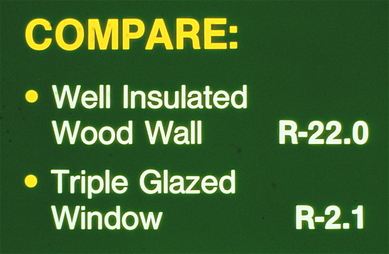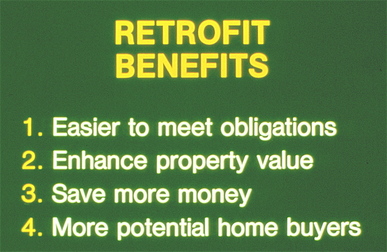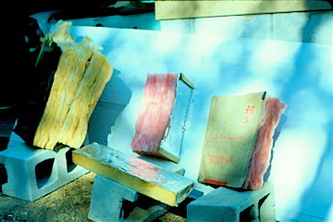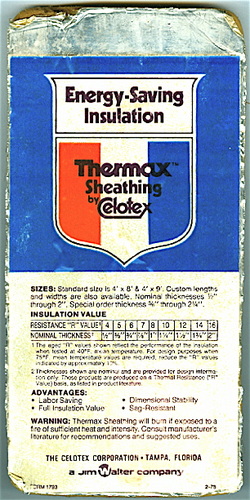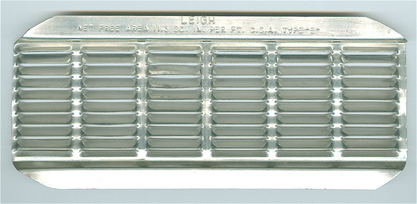Retrofits of Existing Buildings
|
Like where you live and don't want to move? Is the size and floor plan of your home generally okay with you? You can do a remodel or addition and upgrade your thermal protection at the same time. Or, simply a thermal upgrade.
Most building departments don't require an energy protection upgrade in a remodel, but you'd be foolish during this period not to boost your weatherization score. The costs of building over again are far higher, and you can control all the details of a remodel such as the timing. And most the extra R-value or replacement equipment can get favorable tax treatment if it's Energy Star qualified. More efficient lighting and appliances can make a big difference in your energy bills. Use the Internet to search for options (or visit the links page on this Web site. You'll be glad you did. |
Even in a weatherized home there's a big difference between the heat loss/gain of walls versus windows. You can work for a nicely insulated wall and throw the effectiveness away with excessive glazing.
|
|
Three batts from left: R-30, R-19 (foil) and R-11
2" foil-faced polyurethane foam |
Caulking, weatherstripping, and new door shoes can help
(Above)
Continuous soffit vents can introduce large volumes of air to the attic (11.3 square inches per lineal foot) venting as long as there is a convective outlet up high. This can be accomplished by gable vents, but continuous ridge vents are preferable. (Left) Thermal sheathing can stop conductive losses through wall framing (even though such walls are insulated). Sheathing pictured is two-side aluminum-clad polyurethane. PU continues to have the greatest R-value per inch of insulating materials, though it is proportionately expensive. |
